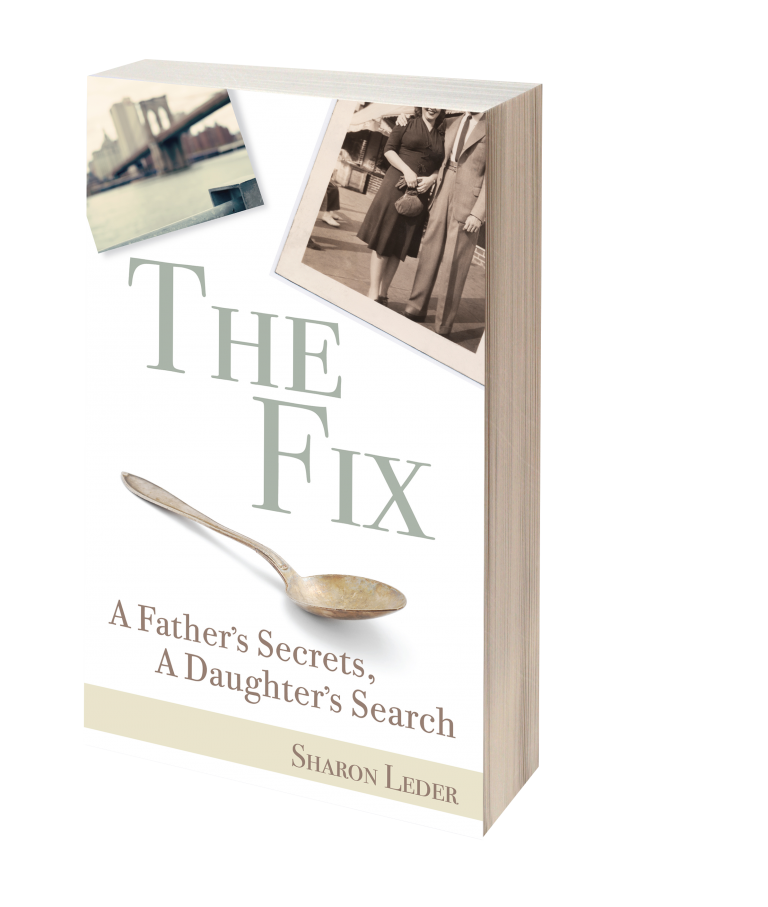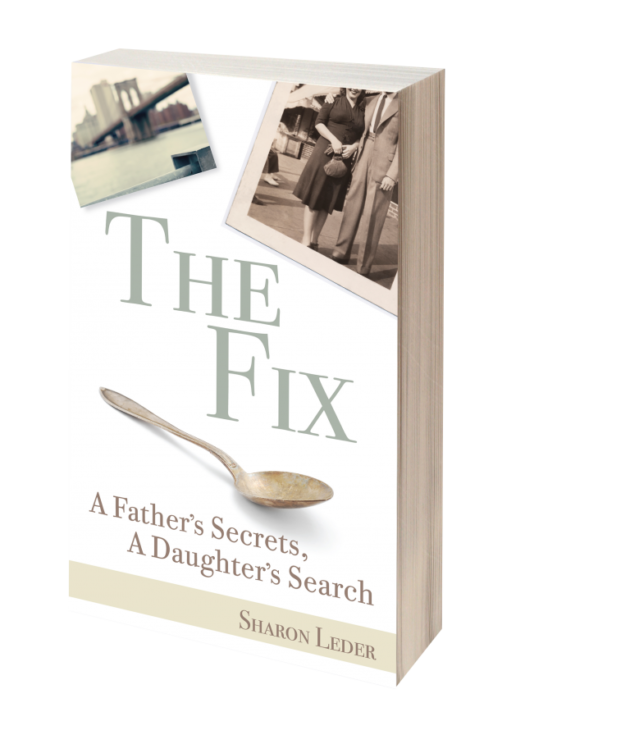
Fixing the Past: A Jewish Heroin Addict’s Daughter Shares Her Story
When the screening ended, four of the eight young “stars” of the film had the courage to speak to the audience in person as part of a panel. We learned that two of the eight had died from overdoses after the film was shot. We observed a moment of silence in their honor and mourned their loss.
One of the panel members said, “Nothing will change unless the public sees the problem.”
Another added, “We’re great kids who fell into this thing. It can happen to anyone.”
When the panel turned to the audience for comments, I was moved to speak because my father didn’t have the opportunity to live in these times of greater awareness. I wanted these brave young people to know what a great step they were taking to share their stories publicly. I stepped in line behind the microphone and told what happened to me in the 1950s and ’60s, when heroin addicts like my father had to suffer in secret because the shame went so deep and the stigma could not be shaken.
My Family’s Story
 I didn’t fully forgive my father until I had gone through the long process of writing extensively about my past, a process of continual revision that lasted thirty years.
I didn’t fully forgive my father until I had gone through the long process of writing extensively about my past, a process of continual revision that lasted thirty years.
When I began this effort, I used the conventional form of memoir, writing in the first person. I characterized my father more negatively then—as selfish, irresponsible, and immature.
What was missing then was a fuller understanding of what my father was really up against. Raised by first-generation Austrian-Polish observant Jews when anti-Semitism was flaring up before World War II, he became addicted as a teenager. By the time he died, his addiction had lasted for close to thirty years. In the 1950s, when my family tried to force him to find a cure—against his will—the available methods were expensive and ineffective. I remember my father hoping that addictive drugs, not only methadone but also heroin, eventually would become legalized, so he could benefit from medical maintenance of his condition. Though we have seen the legalization of marijuana in some parts of our country and around the world, discussions of legalization have not extended to heroin in the United States, and the black-market industry that supplies heroin illegally has grown to a trillion dollars.
A Feminist Awakening
Obsessive academic achievement was my way of escaping from depression and grief. I was bent on proving by my success that I was worthy of the love my father hadn’t shown to me. When I was a junior in college, I met my first husband.
Although he was bright and politically progressive, he held one temporary job after another. He was older than me and had dropped out of college several times. I was attracted to him because he showed me love and physical attention, and I thought I could help him graduate from college. I didn’t recognize then that I was following the same pattern my mother had set: marrying a man who was wounded in a certain way and assuming the role of caretaker to help him regain his pride and productivity. We married after I thought I was pregnant.
At that time, I was drawn to the Women’s Liberation Movement. The consciousness-raising meetings I attended in different women’s Manhattan and Brooklyn apartments helped me see that women were being socialized to heal men’s ailments, and men’s treatment of women as sex objects were social problems, not just my own private experience. What was, in fact, “normal” were the problems hundreds, maybe thousands, of women had with men who were enjoying the privilege of having wives.
After seven years of marriage during which my husband continued taking various temporary jobs and pursuing his hobbies while I was the steady breadwinner teaching college English, I felt I needed to leave my marriage in order to preserve my sense of self. By that time, my love of women’s literature and student-centered teaching put me at odds with the traditional English departments where I was teaching. With the division of assets that resulted from our divorce, I made the good decisions to undergo therapy and return to graduate school. My goal was to teach in the interdisciplinary field of Women’s Studies that was growing around the country.
The flowering field of women’s literature inspired me to write my memoir as a novel, following the advice of Virginia Woolf. In her famous essay A Room of One’s Own, Woolf made several points that applied to me. She believed that women couldn’t find their authentic writing voices if they wrote in angry defiance, because anger causes writers to be stuck on themselves rather than on their subjects. And she believed fiction was a genre enabling women writers to remove themselves to a significant degree from personal injuries and resentments and reach essential truths that moved beyond the mere facts.
I realized that if I wrote my story as fiction rather than as a memoir, I would need to find the good and the strong in all the major figures who shaped my painful childhood. Novels require well-rounded characters because human beings are multidimensional, with many complicated sides to their personalities.
I therefore credit my mother for sharing with me the attractive sides of my father’s personality that drew her to him in the 1930s—qualities she continued to see in him even as he struggled, and failed, to overcome his addiction. I admire her strength in keeping our family together without demonizing the man who could have turned into a total monster in my child-eyes. My mother’s persistent hope, living side by side with her anger, that our situation could improve enabled me to remember all the good things that happened to me under my father’s influence.
My relationship with my mother improved after her short-lived second marriage ended in annulment. In a little less than a year, the financial success her new husband claimed to have proved fraudulent, and my mother and I were able to provide true emotional support for each other, openly discussing life’s ups and downs.
Healing at Age 70
Now that I am seventy years old, married to a sensitive and loving man, and retired from teaching, I’ve been in a twelve-step program for over a year. In the process of finishing my novel, I realized that part of my family’s problem was our secretiveness and isolation. Personal reflection and therapy did not enable me to see my situation as a child of a heroin addict in the same kind of social terms that I had come to understand my position as a woman. It took belonging to a twelve-step community for me to understand the ways heroin addiction affected other women and men.
I wish my father had had the benefit of twelve-step teachings—teachings that view substance abuse as an illness that causes brain dysfunction. Such a view encourages those who are addicts and the people affected by them to come forward and reach out for help, instead of feeling shame because of their problems.
In my case, the shame was exacerbated by being raised Jewish. Jewish communities often deny that addiction occurs within them, and addicts are often stigmatized and shunned.
The move to coordinate twelve-step values with the precepts of Judaism (started by Rabbi Abraham Twerski) has helped pave the way for addiction recovery. Perhaps someday my father’s vision also will be realized. Perhaps someday it will be possible for addicted users of heroin to participate in legalized medical maintenance programs combined with competent counseling.
Wholeness in Community
I have decided to publish my “fiction”—what the twelve steps calls my “personal inventory”— in the hopes that those who haven’t had personal experience with heroin addiction can empathize with the Katz family’s predicament, and those who have been affected by addiction can feel the worth of sharing one’s story. The twelve steps teach that addiction is a family trauma that affects the behaviors of the addict and those close to the addict.
Had I been part of a twelve-step program earlier in my adult life to address this trauma, I might have overcome the fears I had about being a properly caring parent. I was too afraid that, as a parent, I would re-create a dysfunctional situation similar to the one I had experienced.
For me, it’s been a liberating experience to face the past as squarely as I could manage, share my experience with others in meetings, and prepare to have my story published. My message echoes a twelve-step precept: I hope my readers will see that there is no situation so dismal that a community of loving and understanding people cannot help them find a better way out.
Sharon Leder taught English, women’s studies, and Jewish studies on several campuses of the State University of New York before beginning the second half of her life as a fiction writer and poet and releasing her novel, The Fix, in May 2017 (KiCam Projects). You can learn more about Leder at SharonLeder.com.
The views and opinions expressed in this article are the author’s own and do not necessarily reflect those of Lilith Magazine.




One comment on “Fixing the Past: A Jewish Heroin Addict’s Daughter Shares Her Story”
Comments are closed.